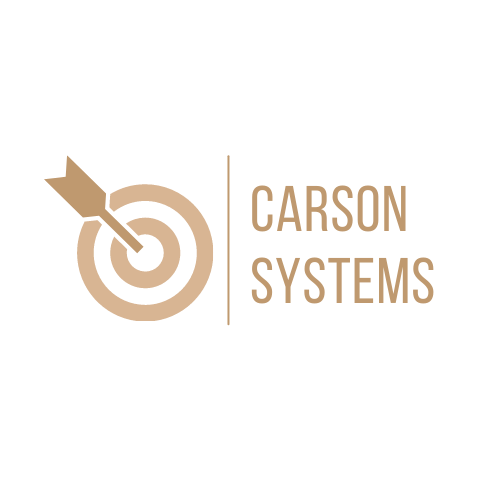When you're working as a self-employed taxi driver, the open road brings both freedom and responsibility. Whilst you're focused on building your business and serving passengers, there's one aspect of the job that requires your constant attention: safety, particularly when it comes to medical emergencies. Being prepared for first aid scenarios isn't just about protecting yourself; it's about ensuring the wellbeing of everyone who steps into your vehicle. Understanding what to carry, how to respond, and when to act can make all the difference when seconds count.
Essential first aid kit components for your taxi
Every self-employed taxi driver should view their first aid kit as an indispensable piece of equipment, much like the motor itself or the proper insurance coverage. The contents of this kit serve as your first line of defence when medical situations arise, whether they involve yourself or a passenger. The kit should be comprehensive yet practical, containing items that address the most common medical emergencies you're likely to encounter whilst on the road.
Must-have medical supplies every driver should carry
Your first aid kit should include the fundamentals that address a wide range of scenarios. Sterile bandages of various sizes are essential for treating cuts and abrasions, whilst adhesive plasters provide quick solutions for minor wounds. Antiseptic wipes and cleansing solutions help prevent infection, a crucial step in wound care. Include disposable gloves to protect both yourself and anyone you're assisting from cross-contamination. Scissors and tweezers prove invaluable for removing splinters or cutting bandages to size. Don't overlook the importance of including pain relief medication such as paracetamol or ibuprofen, as well as antihistamines for allergic reactions. A thermal blanket can be vital for treating shock, whilst a selection of dressings suitable for burns adds another layer of preparedness. Given the unpredictable nature of medical emergencies, having a comprehensive first aid manual within the kit provides valuable guidance when you need to act quickly. Alongside your first aid kit, keeping a fire extinguisher with at least a two-litre capacity ensures you're prepared for vehicle-related emergencies as well, addressing the broader spectrum of taxi driver safety concerns that can arise during a shift.
Proper Storage and Maintenance of Your Emergency Kit
Having the right supplies means little if they're not properly maintained or easily accessible when needed. Your first aid kit should be stored in a location within your taxi that's readily reachable from the driver's seat but secure enough that it won't become a projectile during sudden stops or accidents. Many drivers find that storing the kit beneath the driver's seat or in a dedicated compartment in the boot works well, provided it remains within easy reach. Regular maintenance of your kit is equally important; medical supplies have expiration dates, and using outdated materials can be ineffective or even harmful. Conduct monthly checks to ensure nothing has expired, been used without replacement, or become damaged. Consider creating a simple checklist to track when items need restocking or renewal. This routine maintenance not only ensures readiness but also familiarises you with the kit's contents, meaning you won't waste precious moments searching for specific items during an emergency. Remember that your emergency kit should also include practical items like a torch, bottled water, a phone charger, and a reflective vest, all of which contribute to your overall preparedness for unexpected situations.
Common medical emergencies taxi drivers may encounter
The nature of taxi driving means you're constantly interacting with members of the public, each bringing their own health conditions and potential risks. Understanding the most common medical emergencies helps you prepare mentally and practically for what might occur during your shifts. These situations can range from minor discomforts to life-threatening conditions, and your ability to recognise and respond appropriately can have profound consequences.
Recognising and Responding to Passenger Health Incidents
Passengers may experience various health episodes whilst in your vehicle, and your role involves both assessment and appropriate action. Heart attacks and strokes represent some of the most serious emergencies you might encounter. A passenger experiencing chest pain, shortness of breath, or discomfort radiating to the arm or jaw may be suffering a cardiac event. Someone showing signs of facial drooping, arm weakness, or slurred speech could be having a stroke. In either case, immediate contact with emergency services by dialling 999 is essential, whilst you provide reassurance and keep the person as calm and comfortable as possible. Diabetic emergencies present differently; a passenger may become confused, sweaty, or even lose consciousness if their blood sugar levels drop dangerously. If they're conscious and able to swallow, offering a sugary drink or sweet can help, but emergency services should still be contacted. Allergic reactions, particularly severe ones known as anaphylaxis, can develop rapidly. Watch for swelling, difficulty breathing, or widespread rashes. If the passenger carries an auto-injector, assist them in using it and call for emergency help immediately. Fainting is relatively common and often less serious, but it requires you to stop safely, ensure the person has adequate airflow, and position them so they won't injure themselves. Pregnant passengers occasionally go into labour unexpectedly, which whilst natural, can be distressing for everyone involved. Your priority is to get them to hospital quickly or, if birth is imminent, to pull over safely and contact emergency services for guidance. Throughout any passenger health incident, your calm demeanour and quick thinking serve as crucial elements in managing the situation effectively.
Dealing with your own medical emergencies whilst driving
Whilst much attention focuses on passenger safety, self-employed drivers must also consider their own health vulnerabilities. Driver fatigue prevention plays a vital role in maintaining your wellbeing, as exhaustion can lead to accidents and impaired judgement. Taking regular breaks, staying hydrated, and ensuring you get adequate sleep between shifts are fundamental practices. However, medical emergencies can strike even the most careful driver. If you begin experiencing symptoms such as chest pain, sudden dizziness, or visual disturbances whilst driving, your immediate priority is to pull over safely. Use your hazard lights to alert other road users and position your vehicle away from traffic flow whenever possible. Once stationary, assess your condition honestly. If symptoms are serious or worsening, call 999 without delay. If you're linked to a private hire dispatch system or control centre, use your radio to communicate your situation and location, potentially using a pre-arranged code word if you feel unable to speak freely. Keep your mobile phone charged and accessible, with emergency contact numbers readily available. Some drivers find it helpful to wear medical alert jewellery if they have known conditions such as diabetes or severe allergies, as this information can prove invaluable to paramedics. Remember that your vehicle should be equipped with a panic button or alternative emergency communication method, particularly useful if you become incapacitated and unable to use your phone. Protecting your own health isn't just about personal safety; it's also about ensuring you don't put passengers or other road users at risk due to a medical episode that could have been managed differently.
First Aid Training and Certification for Private Hire Drivers
 Knowledge is your greatest asset when facing medical emergencies, and whilst a well-stocked first aid kit provides the tools, proper training gives you the confidence and competence to use them effectively. For self-employed taxi drivers, investing in first aid education represents a commitment to professionalism and passenger care that extends far beyond the minimum legal requirements.
Knowledge is your greatest asset when facing medical emergencies, and whilst a well-stocked first aid kit provides the tools, proper training gives you the confidence and competence to use them effectively. For self-employed taxi drivers, investing in first aid education represents a commitment to professionalism and passenger care that extends far beyond the minimum legal requirements.
Recommended first aid courses and qualifications
Several organisations throughout the UK offer first aid courses specifically designed for those working in public-facing roles or driving professions. St John Ambulance, the British Red Cross, and various private training providers deliver courses ranging from basic awareness to comprehensive certification. The Emergency First Aid at Work course typically takes one day to complete and covers essential skills such as managing an unresponsive casualty, performing CPR, treating wounds and bleeding, and recognising signs of heart attack and stroke. This level of training provides a solid foundation for taxi drivers who want practical, applicable knowledge without committing to longer courses. For those seeking more thorough preparation, the First Aid at Work qualification extends to three days and delves deeper into various medical emergencies, including fractures, burns, and eye injuries. Some training providers offer courses tailored specifically to driving professionals, incorporating scenarios you're likely to encounter such as dealing with intoxicated passengers or managing conflicts that could escalate to violence. Beyond standard first aid, consider supplementary training in mental health awareness, as passengers experiencing psychological crises may require a different approach than those with physical injuries. The investment in these qualifications not only enhances your capability to respond to emergencies but also demonstrates to passengers and licensing authorities that you take your responsibilities seriously. Many insurance providers, including those offering motor trade insurance, view additional qualifications favourably, potentially affecting your insurance coverage terms.
Keeping your first aid skills current and refreshed
First aid certification isn't a once-and-done achievement; skills and knowledge require regular updating to remain effective. Most first aid certificates remain valid for three years, after which a refresher course is necessary to renew your qualification. However, waiting the full three years before revisiting your training can lead to forgotten techniques and reduced confidence when emergencies arise. Consider undertaking annual refresher sessions, even informal ones, to keep procedures fresh in your mind. Many training organisations offer half-day refresher courses that review essential skills without requiring the time commitment of a full re-certification. Additionally, numerous online resources provide video demonstrations and scenario-based learning that you can access during downtime between fares. Practice makes perfect, and whilst you hopefully won't need to use these skills often, rehearsing them mentally or with willing friends ensures muscle memory remains sharp. Stay informed about changes to first aid protocols, as medical best practices evolve based on new research and evidence. Joining professional driver forums or associations can provide opportunities to discuss safety concerns with peers and learn from their experiences. Some drivers find it helpful to create reminder notes about key procedures and keep them with their first aid kit, providing quick reference during high-stress moments. Remember that your commitment to maintaining current first aid knowledge reflects your dedication to taxi driver safety and positions you as a responsible professional within the private hire industry.
Safety Protocols and Emergency Procedures for Self-Employed Drivers
Being prepared for medical emergencies extends beyond first aid skills and equipment; it encompasses having clear protocols and procedures that guide your actions when crisis strikes. For self-employed drivers, creating and following these protocols means taking personal responsibility for your safety framework rather than relying on an employer's policies.
Creating your personal emergency response plan
Your emergency response plan serves as a roadmap for handling various scenarios, reducing confusion and hesitation when immediate action is required. Begin by identifying the types of emergencies most likely to affect your work, including medical incidents, vehicle breakdowns, traffic accidents, robbery, assault protection needs, and severe weather events. For each category, outline the specific steps you'll take, starting from recognition through to resolution. For medical emergencies, your plan should include immediate safety measures such as pulling over and using hazard lights, followed by assessment of the situation, contacting emergency services when necessary, and providing appropriate first aid. Document emergency contact numbers in multiple locations: programmed into your mobile phone, written on a card kept in your wallet, and listed in your vehicle. Include numbers for emergency services, your insurance provider, breakdown cover, and a trusted personal contact who can assist if needed. If you're registered with a private hire dispatch system, ensure you understand their emergency protocols and how to communicate distress situations. Consider the role of technology in your response plan; many drivers now use dash cams and CCTV cameras not only for incident reporting and crime prevention but also as tools that can provide valuable evidence if disputes arise about what occurred during an emergency. Your tracking technology can help emergency services locate you quickly if you're unable to provide clear location details. Review your plan regularly, particularly when your circumstances change, such as when you begin working new areas or different shifts. Share key elements of your plan with family members so they understand your safety measures and know how to respond if you contact them during an emergency.
Coordinating with Emergency Services and Reporting Incidents
Effective coordination with emergency services can significantly impact outcomes during medical emergencies. When calling 999, remain as calm as possible and provide clear, concise information about the nature of the emergency, your exact location, and the condition of anyone requiring assistance. If you're in an unfamiliar area, use landmarks, street signs, or your vehicle's GPS to describe your position accurately. Stay on the line until the operator indicates you can disconnect, as they may need additional information or want to provide instructions whilst help is en route. If you've been trained in first aid, inform the operator of this fact, as they may guide you through specific procedures appropriate to the situation. After emergency services arrive and the immediate crisis is managed, your responsibilities continue with proper incident reporting. For medical emergencies involving passengers, document everything you can remember: the time and location, symptoms observed, actions you took, and the outcome. This information proves valuable for your records, insurance claims, and any subsequent investigations. Incidents involving assault, robbery, or hate crimes require reporting to the police using the non-emergency number 101 or, if the situation presents ongoing danger, 999. Your licensing authority should also be informed of significant incidents, as they maintain oversight of safety standards within the taxi industry. If you have CCTV cameras or a dash cam installed, ensure footage is preserved according to data protection regulations, as it may serve as crucial evidence. Many drivers find it helpful to complete a brief incident report form immediately after events while details remain fresh. Consider joining driver support networks or forums where you can share experiences and learn from others who've faced similar situations. Remember that reporting serious incidents isn't just about protecting yourself; it contributes to broader taxi driver safety by alerting authorities to emerging patterns or particular risks within your operating area. Some incidents may also have implications for your motor trade insurance, so prompt notification to your provider ensures you remain compliant with policy terms and can access support if needed for vehicle damage, injury claims, or other consequences arising from the emergency.




